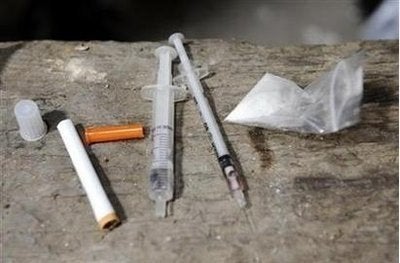
Since the opening of the Winter Olympics in Vancouver, it's been hard to miss the images of beaming athletes on podiums with shiny medals around their necks. But recently, I came across a USA Today article that created a different sort of spotlight on British Columbia's largest city.
The story addressed the controversy surrounding Insite, the first legal facility in North America where injection drug users can come with their substances of choice, receive clean needles, and inject under the supervision of nurses -- without fear of arrest. Insite operates in Vancouver's Downtown Eastside, a poor neighborhood that is home to about a third of the city's 12,000 injection substance abusers. Since Insite opened in 2003, supporters say that it has helped prevent the spread of infectious disease and overdose deaths, yet Canada's federal government insists that it merely encourages drug use and perpetuates addiction. So, Insite advocates decided to take advantage of the recent media focus on Vancouver to make their case for its existence.
While I strongly believe in public health initiatives that aim to minimize the damage injection drugs can cause, I found it striking that none of Insite's supporters quoted in the story mentioned drug treatment referrals or testing for HIV, TB and other conditions. Providing clean syringes and first aid in the event of an overdose certainly lowers the likelihood of injury and disease, but these services alone won't stop the cycle of substance abuse. Any harm reduction strategy, like the needle exchange programs in the US, belongs in a package that includes screening, brief interventions, referrals to treatment, and other medical care.
Later, when I looked at Insite's website, I was encouraged by the fact that the facility is actually part of a larger organization that provides "a complete continuum of services," including prevention, opioid replacement therapy, residential treatment, and housing support. An addiction counselor is part of Insite's staff and, in its second year of operation, it made 2,000 referrals to other services. A New England Journal of Medicine study found that, because Insite removes barriers to treatment, its clients -- who may not be well connected to the health care system -- have increased their use of detox and withdrawal programs.
If Insite's advocates want a real shot at challenging critics, they should emphasize that it is not a stand-alone operation, but a "rung on the ladder" from "chronic drug addiction to recovery." People suffering the devastating effects of substance abuse cannot change their lives overnight. But, getting off the street and coming to a place like Insite -- where medical professionals can help them get the care they need -- may be the first step in the process. I hope future media coverage of Insite offers this perspective.